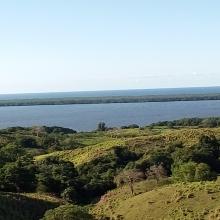
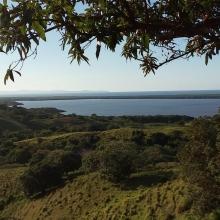
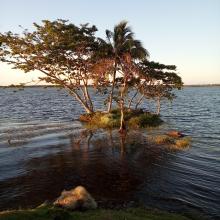
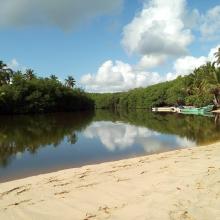
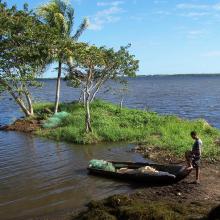
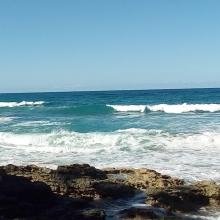
Refugio de Vida Silvestre Laguna Redonda y Limón (Los Humedales del Refugio de Vida Silvestre Laguna Redonda y Limón, Miches y Ria Maimón)
- Country:Dominican Republic
- Site number:2498
- Area:5,754 ha
- Designation date:13-10-2022
- Coordinates:18°59'N 68°54'W
Materials presented on this website, particularly maps and territorial information, are as-is and as-available based on available data and do not imply the expression of any opinion whatsoever on the part of the Secretariat of the Ramsar Convention concerning the legal status of any country, territory, city or area, or of its authorities, or concerning the delimitation of its frontiers or boundaries.
Overview
The Site is composed of two main lagoons: the Redonda lagoon, with brackish waters and access to the sea, and the Limón lagoon, which has fresh water and is surrounded by rice paddies and reed beds. The Redonda lagoon boasts extensive mangrove swamps of four species, with the red mangrove (Rhizophora mangle) being the most abundant. The Limón lagoon is surrounded by swamps, with vegetation characterised by a large number of herbaceous and palustrine plants such as Typha domingensis, Eleocharis interstincta and Gynerium sagittatum. The Site hosts five species of amphibians endemic to the Dominican Republic and is a wintering site for migratory ducks, including the lesser scaup (Aythya affinis), ring-necked duck (Aythya collaris), ruddy duck (Oxyura jamaicensis), white-cheeked pintail (Anas bahamensis) and blue-winged teal (Anas discors). The Site provides important ecosystem services such as protection against erosion, natural bio-physical filters which maintain the quality of the water draining to the coast, and sustenance for people, mainly because of the area’s fishing productivity and rice crops. The main threats are livestock farming and ranching, unsustainable fishing, and the destruction of forests surrounding the lagoons. This Site boasts various cultural records of ancient Taino civilizations.
Administrative region:
Región Este de la República Dominicana, Provincia El Seibo, Municipio de Miches
- National legal designation:
- Refugio de Vida Silvestre - Refugio de Vida Silvestre Laguna Redonda y Limón
- Last publication date:07-11-2022
Downloads
Ramsar Information Sheet (RIS)
Additional reports and documents
- Taxonomic lists of plant and animal species occurring in the site
- A detailed Ecological Character Description (ECD)
- Other published literature
